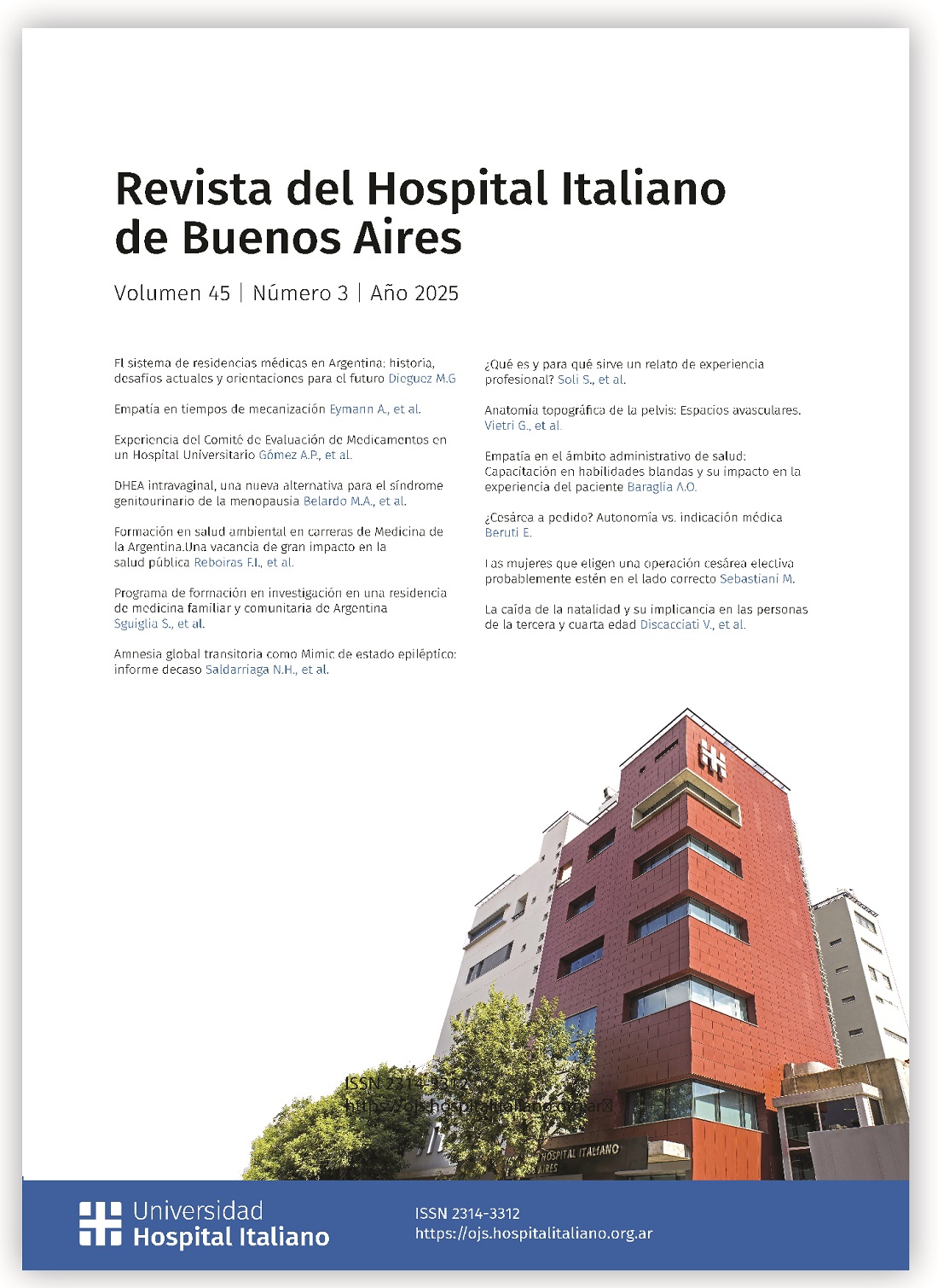Cesarean on Demand? Autonomy vs. Medical Indication
Main Article Content
Abstract
Cesarean delivery without medical indication raises an ethical dilemma between autonomy and professional responsibility. In low-risk pregnancies, vaginal birth offers greater benefits and lower risks. The physician’s role is to support, inform, and care, always prioritizing maternal and neonatal health over mere demand.
Downloads
Article Details
Section

This work is licensed under a Creative Commons Attribution-NonCommercial-ShareAlike 4.0 International License.
How to Cite
References
Betrán AP, Ye J, Moller AB, Zhang J, et al. The increasing trend in caesarean section rates: global, regional and national estimates: 1990-2014. PLoS One. 2016;11(2):e0148343. https://doi.org/10.1371/journal.pone.0148343. DOI: https://doi.org/10.1371/journal.pone.0148343
Sandall J, Tribe RM, Avery L, et al. Short-term and long-term effects of caesarean section on the health of women and children. Lancet. 2018;392(10155):1349-1357. https://doi.org/10.1016/S0140-6736(18)31930-5. DOI: https://doi.org/10.1016/S0140-6736(18)31930-5
International Federation of Gynecology and Obstetrics; International Confederation of Midwives; White Ribbon Alliance; et al. Mother-baby friendly birthing facilities. Int J Gynaecol Obstet. 2015;128(2):95-99. https:// doi.org/10.1016/j.ijgo.2014.10.013. DOI: https://doi.org/10.1016/j.ijgo.2014.10.013
World Health Organization. Department of Reproductive Health and Research. Statement on caesarean section rates [Internet]. Geneva: WHO; 2015 [citado 2025 ago 20]. Disponible en: https://iris.who.int/bitstream/handle/10665/161442/WHO_RHR_15.02_eng.pdf.

